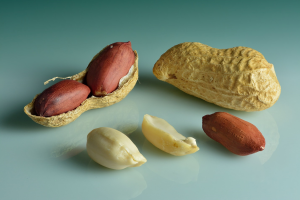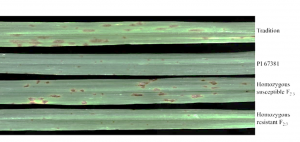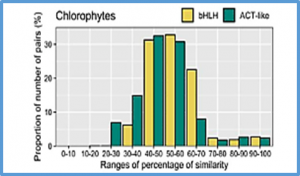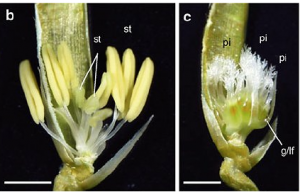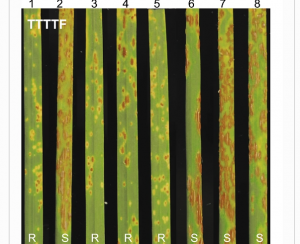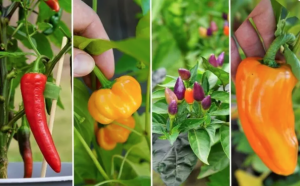Cultivated peanut (Arachis hypogaea), a progeny of the cross between A. duranensis and A. ipaensis, is an important oil and protein crop from South America. To date, at least six Arachis genomes have been sequenced. WRKY transcription factors (TFs) play crucial roles in plant growth, development, and response to abiotic and biotic stresses. WRKY TFs have been identified in A. duranensis, A. ipaensis, and A. hypogaea cv. Tifrunner; however, variations in their number and evolutionary patterns across various Arachis spp. remain unclear.
Spot form net blotch (SFNB), caused by the necrotrophic fungal pathogen Pyrenophora teres f. maculata (Ptm), is an economically important foliar diseases in barley. Although various resistance loci have been identified, breeding for SFNB-resistant varieties has been hampered due to the complex virulence profile of Ptm populations. One resistance locus in the host may be effective against one specific isolate, but it may confer susceptibility to other isolates. A major susceptibility QTL on chromosome 7H, named Sptm1, was consistently identified in many studies. In the present study, we conduct fine mapping to localize Sptm1 with high resolution.
Geraniol derived from essential oils of various plant species is widely used in the cosmetic and perfume industries. It is also an essential trait of the pleasant smell of rose flowers. In contrast to other monoterpenes which are produced in plastids via the methyl erythritol phosphate pathway, geraniol biosynthesis in roses relies on cytosolic NUDX1 hydrolase which dephosphorylates geranyl diphosphate (GPP)
Basic helix–loop–helix (bHLH) proteins are one of the largest families of transcription factor (TF) in eukaryotes, and ~30% of all flowering plants’ bHLH TFs contain the aspartate kinase, chorismate mutase, and TyrA (ACT)-like domain at variable distances C-terminal from the bHLH. However, the evolutionary history and functional consequences of the bHLH/ACT-like domain association remain unknown.
Fusarium wilt of banana (FWB) is a serious soil-borne fungal disease. In the previous century, FWB already destroyed Gros Michel-based banana cultures in Central America, and currently, the disease threatens all major banana-producing regions of the world. The causal agents of these epidemics, however, are diverse. Gros Michel was infected by a wide range of Fusarium species, the so-called Race 1 strains, whereas the contemporary Cavendish-based cultures are affected by Fusarium odoratissimum, colloquially called Tropical Race 4 (TR4).
RNA editing is a post-transcriptional modification of an RNA nucleotide sequence. Until now, different RNA editing systems were found in the major eukaryotic clades. In the plant kingdom, RNA editing was mainly documented in the mitochondria and chloroplast genomes. However, variation among large taxonomic groups and the evolutionary trajectory in terms of intra- and inter-clades remains unclear. To gain a better understanding of RNA editing evolution, in this study, based on publicly available RNA-seq data across three clades (fern, gymnosperm, and angiosperm), we provided a detailed analysis of chloroplast RNA editing events and discussed its evolution in land plants.
Heat stress (HS) caused by high-temperature weather seriously threatens international food security. Indeed, as an important food crop in the world, the yield and quality of rice are frequently affected by HS. Therefore, clarifying the molecular mechanism of heat tolerance and cultivating heat-tolerant rice varieties is urgent. Here, we summarized the identified quantitative trait loci (Quantitative Trait Loci, QTL) and cloned rice heat tolerance genes in recent years. We described the plasma membrane (PM) response mechanisms, protein homeostasis, reactive oxygen species (ROS) accumulation, and photosynthesis under HS in rice.
The slope of regression in a reaction norm model, where the performance of a genotype is regressed over an environmental covariable, is often used as a measure of stability of genotype performance. This method could be developed further by partitioning variation in the slope of regression into the two sources of genotype-by-environment interaction (G × E) which cause it: scale-type G × E (heterogeneity of variance) and rank-type G × E (heterogeneity of correlation). Because the two types of G × E have very different properties, separating their effect would enable a clearer understanding of stability.
Race Ug99 of Puccinia graminis f. sp. tritici (Pgt), the causal agent of wheat stem (or black) rust is one of the most serious threats to global wheat production. The identification, mapping, and deployment of effective stem rust resistance (Sr) genes are critical to reduce this threat. In this study, we generated SrTm4 monogenic lines and found that this gene confers resistance to North American and Chinese Pgt races. Using a large mapping population (9522 gametes), we mapped SrTm4 within a 0.06 cM interval flanked by marker loci CS4211 and 130K1519, which corresponds to a 1.0-Mb region in the Chinese Spring reference genome v2.1.
The deciduous character of ripe fruit, which is controlled by the dominant S locus, is a domesticated trait with potential value in the pepper processing industry (Capsicum spp.). However, the gene associated with the S locus has not been identified. Here, one major QTL designated S10.1 was detected by using the F2 population (n = 155) derived from BA3 (Capsicum annuum) × YNXML (Capsicum frutescens) and was further verified in an intraspecific backcross population (n = 254) derived from the cross between BB3 (C. annuum)


 Curently online :
Curently online :
 Total visitors :
Total visitors :
